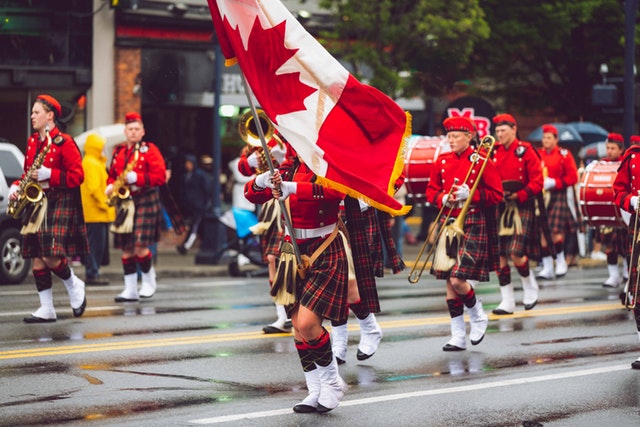Now Burns night has passed and your poetry readings are over for another year, your traditional Scottish kilt will need to be put into storage.
Hopefully, it will have escaped whiskey spills, haggis stains and the bustle of Burns Night flings. Let’s look at how you can care for your kilt to ensure it’s in top condition for its next outing.
The beauty and significance of a well-made kilt
Kilts are a special addition to any wardrobe. Not only do they look magnificent as part of traditional Scottish dress, they’re steeped in meaning. Kilts are also tied inextricably to the country’s history and culture.
We couldn’t look at kilt care without first considering some of the incredible facts around these wonderful garments.
- Kilts originated in the Scottish Highlands around the 16th century. They were worn as complete garments gathered in pleats or thrown over the shoulder. They then evolved through the 17th and 18th centuries to the knee-length versions we know today.
- The colour of a kilt’s wool depended on the availability and prevalence of natural dyes in their region of origin. Fabric was dyed using nature-based resources such as berries, plants and roots.
- Tartan simply means a multi-coloured fabric featuring a chequered pattern. Although they were traditionally made from woven wool, today kilts are available in a range of materials.
How to store and care for your kilt
Kilts are often connected to family history and traditions. Because of this, they can hold sentimental value and conjure memories of special occasions. They are also ideal heirlooms to pass to family members.
A well-made kilt can last for decades. However, kilts need proper care and storage if they are to survive the years. This is especially true if yours is made from a natural fibre, such as wool.
The art of hanging
Your kilt will be heavy if made from wool. If bought off-the-rack, it may have small loops inside for hanging. You should never use these.
Invest in a sturdy kilt hanger to avoid sagging. Not only will this help the garment keep its shape over time, it can also help retain its pleating. If you need to transport your kilt, invest in a suitable bag that will allow you to fold and store it flat while on the move.
Snagging from pins and sporrans
Unfortunately, the accessories that make a kilt look its best can also damage them the most. At Jeeves of Belgravia, we often see holes, tears and snags come from kilt pins and sporrans. Even ahead of stains and marks, these are the most challenging problems to repair.
This is because they often occur on the front of the kilt and can be hard to disguise on a tartan pattern. The solution to this is to refrain from using pins altogether. Or, try to keep your pin in the same place for the kilt’s lifespan.
With regards to sporrans, choose one with minimal metal embellishments and sharp edges. Or one with detail concentrated in an area well away from the kilt fabric.
Clean swiftly and professionally
After particularly memorable evenings, your kilt will need proper cleaning before being stored. This is important, as stains and marks are more likely to lift if treated swiftly. If left for a long time, they will soak into the fabric and become impossible to remove.
Ensure you take your kilt for specialist dry cleaning or treatment. If in doubt, check with your kilt maker or manufacturer for their recommendations.
Control the climate and inspect regularly
As traditional kilts are made of natural fibres, it’s important to keep it in an environment free from extreme temperatures, damp and humidity. Regularly inspect it to ensure no mould or mildew has settled on the fabric. An occasional airing will allow you to examine it more closely.
It’s also important that you allow your kilt to dry thoroughly after cleaning. This will ensure that it’s not damp before going into long-term storage.
Beware of the hungry moth
Moth larvae are attracted to clothing made of natural fibres as they feed on the keratin present in them. Often, they will have moved in and done their damage before you notice. This is another reason why regularly inspecting and airing your kilt is important. Investing in moth repellent could help protect your much-loved clothes. Lavender or cedar can be effective natural remedies. Hanging small bags in your wardrobe can help keep these hungry critters away.
Taking a few or more of these small steps to care for your kilt should ensure it serves you and your family for decades to come.


